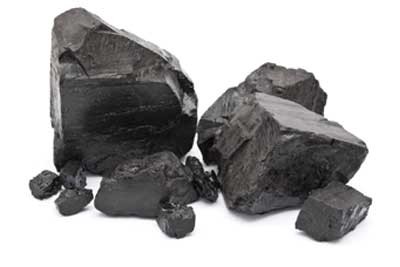
By Wayne Barber, Chief News Analyst, GenerationHub
Natural gas will continue to play a growing role in the Eastern Interconnection (EI), although newer, scrubbed coal units can survive the hard times, according to a study funded by the Department of Energy (DOE).
Coal continues to be squeezed by cheap gas, weak power demand, ever-tougher environmental standards and markets that often don't adequately reward fuel diversity or capacity needs.
These are a few key themes that emerge from the “Current State and Future Direction of Coal-fired Power in the Eastern Interconnection.” The 200-page white paper was done for the Eastern Interconnection States' Planning Council (EISPC) and the National Association of Regulatory Utility Commissioners (NARUC) by ICF International.
DOE's National Energy Technology Laboratory (NETL) and a senior Massachusetts Institute of Technology (MIT) Senior Research Engineer Howard Herzog also played large roles in the report, made public Aug. 21.
The Eastern Interconnection States' Planning Council (EISPC) represents the 39 states, the District of Columbia, the City of New Orleans, and the 8 Canadian Provinces located within the Eastern Interconnection electric transmission grid.
“In summary, with persistent low natural gas prices and more environmental regulations, natural gas continues to be the most cost effective generation fuel source,” ICF said in the report. With electricity costs expected to remain relatively low for natural gas power plant, new generating units in the United States will continue to be mainly gas-based, according to the report.
“Furthermore, there are no mechanisms in the power markets to internalize the value of fuel diversity, fuel security, or other public policy considerations. Hence, the new thermal generating units that have cleared in recent capacity auctions have overwhelmingly been natural gas-fired plants,” ICF noted.
Should coal plants be required to implement carbon capture and storage (CCS) technology, “with its additional costs and technology risks, will further disadvantage new coal plants relative to gas,” ICF said.
Future looks bleak for 50-year coal capacity
The report paints a picture of an aging coal fleet with much of it being uneconomic to retrofit with costly new pollution controls.
“Of the 269 GW of U.S. coal capacity in the EI, roughly one-third is located in just five states: Indiana, Illinois, Ohio, Pennsylvania, and West Virginia. By 2015, the average age of the coal units in these five states will be nearly 50 years,” ICF said in the white paper.
Generation owners have announced 47 GW of coal-fired capacity retirements for 2012 and beyond, according to the white paper.
The majority of units without SO2 controls will be older than 50 years by 2015, and most have less than 300 MW of capacity, while the newest units (25 years and under) are controlled for SO2 due to New Source Performance Standards (NSPS), ICF said in the report.
ICF expects more retirements from the 50-and-over, un-scrubbed sector.
Despite its large coal fleet, only a handful of affected states - including West Virginia, Kentucky, Texas, and Montana - have enacted multiple laws to address permitting issues related to CCS.
ICF expects that natural gas prices will show a gradual rise in the long term. This will help existing coal units, but the relative costs still make it difficult to finance new coal capacity, the consulting firm said.
In addition to building new combined-cycle gas plants, some generators are moving to simply refuel coal units with natural gas. Examples of this are NRG Energy's (NYSE: NRG) Dunkirk facility and some of Southern's (NYSE:SO) Plant Yates units in Georgia.
The migration from coal to gas in the national fuel mix is even more prominent in the EI. Coal generation that routinely accounted for more than 60% of total generation over the past 30 years is now at 41% in 2012 in the region.
Over the same time period (1980-2010), the share of generation from natural gas-fired units in the EI has increased from 10% to 20%, and the share of generation from nuclear units has increased from 14% to 23%.
The growth in the natural gas power fleet has been tempered somewhat by the low load growth, ICF said. Also, stable gas prices and environmental retrofits have enabled Illinois Basin coal to stage a comeback.
Additionally, the development of new natural gas capacity depends on the availability of pipeline infrastructure and pipeline capacity. “In many regions within the EI, especially in the Northeast and Mid-Atlantic areas, electric-gas integration requires extensive cooperation and coordination between previously separated gas and electric sectors.”
The report also looks at existing and potential carbon dioxide pipeline routes in the United States; pros and cons of CCS technology; and a roundup of major legal decisions affecting proposed EPA regulations for coal plants.
The report is available on the NARUC web site: http://naruc.org/Grants/Documents/Final-ICF-Project-Report071213.pdf
Subscribe to GenerationHub
Copyright © 2013: PennWell Corporation Subscribe to http://www.power-eng.com